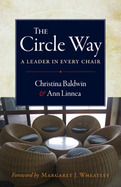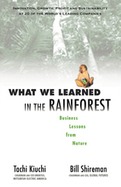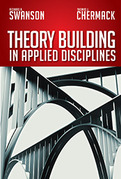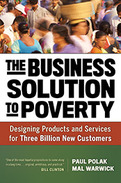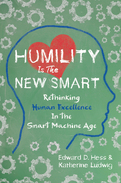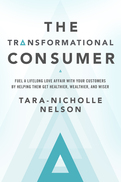2010
- Demonstrates that nature provides a powerful business model for driving innovation, increasing profit, spurring growth, and ensuring sustainability
- Includes real-life examples from such leading companies as Coca-Cola, Intel, Coors, Nike, Ford, DuPont, 3M, and more
- Written by two would-be "arch enemies": a hard-nosed CEO of a major corporation and a dedicated environmentalist
- Doesn't just balance competing interests-it integrates them in a new paradigm
- The first multidisciplinary book specifically on building, evaluating, and developing theories in academic fields that apply research to professional practice
- Offers a five-phase model that can be used to build and test a theory in any applied discipline
- Written by two highly respected scholars
Theory matters in applied disciplines-fields that apply scholarly research to professional practice, such as management, social work, health care, human resource development, education, and many others. Because these disciplines deal with human beings in the real world, a flawed theory can result in actual harm to people and institutions.
When faced with a professional problem, practitioners resort to the latest fad or simply throw everything and anything at it because of the lack of sound theory. Scholars deal with problems by slicing them into small segments to study them but fail to address the practical implications. What's needed is a way to unite research and practice to create robust theory.
This is exactly what Richard Swanson and Thomas Chermack offer here: a complete, five-step method for developing sound, field-tested theory in applied disciplines. Unlike many existing methods, which cover only the initial conceptualization of a theory, the authors offer a complete approach, from conceptualizing a theory to creating relevant assessment criteria, establishing a research agenda to test the theory's validity, applying the theoretical concepts in the real world, and using that experience to further refine and improve the theory. The method is not restricted to any single discipline, nor is it beholden to any research ideology.
Swanson and Chermack provide a set of tools for each phase of the process, making this book accessible and applicable to a wide audience. And in addition to examples in each chapter, they offer two extended case examples of complete theory building. With flawed theories impeding the development of many applied disciplines, this book is desperately needed.
The nearly three billion people living on $2 a day are not just the world's greatest challenge-they represent an extraordinary market opportunity.
- Shows why business is better equipped to eradicate world poverty than nonprofits or governments
- Coauthored by businessman and inventor Paul Polak, who has helped nearly twenty million people get out of poverty, and prominent serial social entrepreneur Mal Warwick
- Details how to design and market products that transform the lives of the world's poor-and make a nice profit
The nearly three billion people living on $2 a day are not just the world's greatest challenge-they represent an extraordinary market opportunity. The key is what Paul Polak and Mal Warwick call Zero-Based Design: starting from scratch to create innovative products and services tailored for the very poor, armed with a thorough understanding of what they really want and need and driven by what Polak and Warwick call "the ruthless pursuit of affordability."
Polak has been doing this work for years, and Warwick has extensive experience in both business and philanthropy. Together, they show how their design principles and vision can enable unapologetic capitalists to supply the very poor with clean drinking water, electricity, irrigation, housing, education, health care, and other necessities at a fraction of the usual cost and at profit margins comparable to those of businesses in the developed world.
Promising governmental and philanthropic efforts to end poverty have not reached scale because they lack the incentives of the market to attract massive resources. This book opens an extraordinary opportunity for nimble entrepreneurs, investors, and corporate executives that will result not only in vibrant, growing businesses but also a better life for the world's poorest people.
Smart machines are replacing more and more jobs. Edward Hess and Katherine Ludwig show how to develop abilities that machines don't have so we can thrive in this Smart Machine Age. Underlying them all is a sense of personal humility: honestly recognizing our limitations and working to mitigate them.
In nearly every industry, smart machines are replacing human labor. It's not just factory jobs-automated technologies are handling people's investments, diagnosing illnesses, and analyzing written documents. If we humans are going to endure, Edward Hess and Katherine Ludwig say we're going to need a dose of humility.
We need to be humble enough to let go of the idea that smart means knowing the most, using that information quickest, and making the fewest mistakes. Smart machines will always be better than we are at those things. Instead, we need to cultivate important abilities that smart machines don't have (yet): thinking critically, creatively, and innovatively and building close relationships with others so we can collaborate effectively. Hess and Ludwig call this being NewSmart.
To develop these abilities, we need to practice four specific behaviors: keeping our egos out of our way, managing our thoughts and emotions to curb any biases or defensiveness, listening to others with an open mind, and connecting with others socially and emotionally. What all these behaviors have in common is, again, humility-avoiding self-centeredness so we can learn from and work with other humans. Hess and Ludwig offer a guide to developing these NewSmart abilities and to creating organizations where these qualities are encouraged and rewarded.
They are the most valuable, least understood customers of our time. They buy over $4 trillion in life-improving products and services every year. If you serve their deeply human need to continually improve their lives, they will eagerly engage with your brand at a time when most people are tuning out corporate messages.
They are Transformational Consumers, and no one knows them like Tara-Nicholle Nelson. Her Transformational Consumer insights powered her work at MyFitnessPal, which grew from 40 million to 100 million users in her time there.
Nelson takes readers on a hero's journey to connecting with customers in ways both profitable and transformational. After going inside the brains, emotions, and behaviors of Transformational Consumers, Tara issues a call to adventure: a rallying cry to leaders to shift their focus from simply making products to solving their customers' problems.
Nelson uses stories and cases studies from every industry to guide readers through this journey in five stages, shedding light on how to rethink their customers, their products and services, their marketing, their competition, and even their culture.
The key to growing a business today is not building an app or getting new social media followers. The key is engaging people over and over again by triggering their deep, human desire for growth and transformation.
When a company reorients every initiative to serve Transformational Consumers, it kick-starts a lifelong love affair with its customers—a love affair that results in unprecedented revenue growth, product innovation, and employee engagement.


